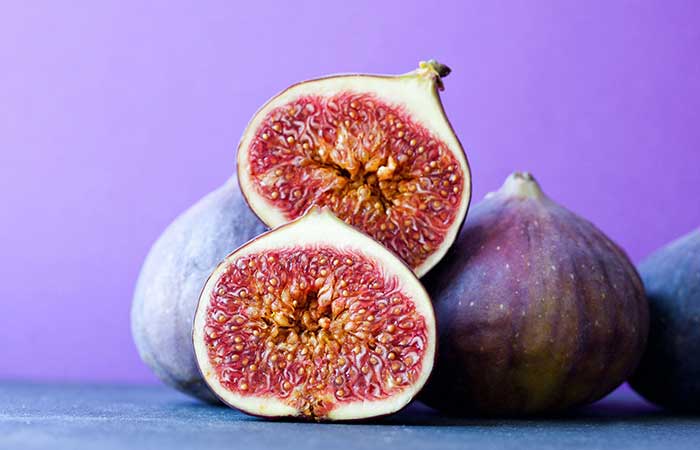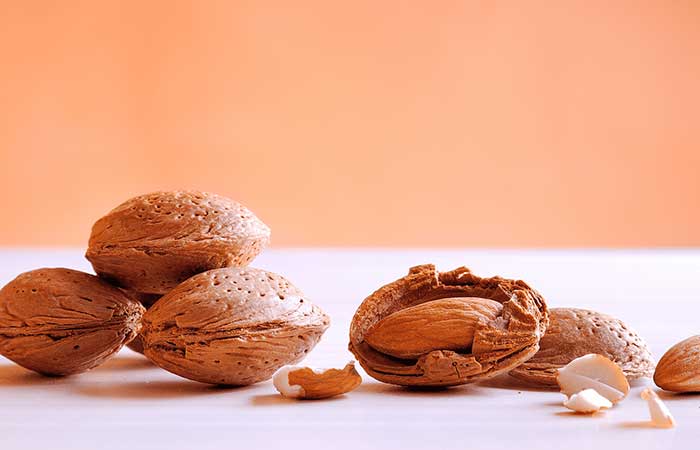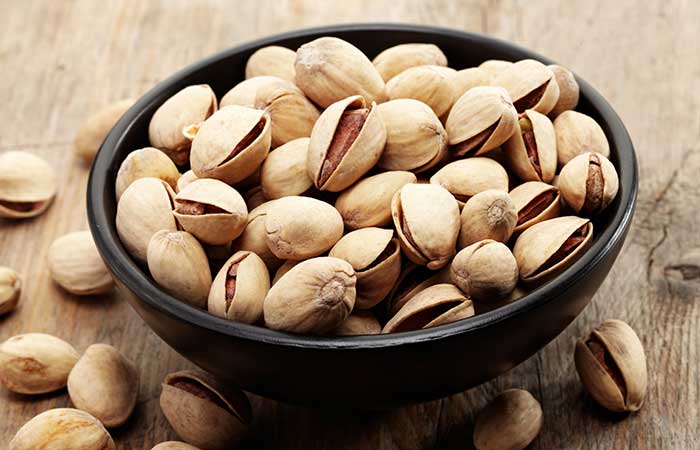What is Fig? Nutritions and Benefits

The fig (Ficus carica) is a member of the mulberry family (Moraceae) and is known for its delicious edible fruit. The common fig is native to an area that stretches from Asiatic Turkey to northern India, but it also grows as natural seedlings in many Mediterranean countries. Due to its adaptability and popularity, it is cultivated in warm climates worldwide.
In the Mediterranean region, the fig has been a staple food for centuries, both in its fresh and dried forms. It is often referred to as "the poor man's food" because it has been an important and affordable source of nutrition for many people in the region.
Figs are not only tasty but also nutritious. They contain significant amounts of essential minerals like calcium, potassium, phosphorus, and iron, making them a valuable addition to the diet. Additionally, figs are a good source of dietary fiber, antioxidants, and various vitamins, such as vitamin A, vitamin K, and several B-complex vitamins.
They can be enjoyed fresh, and when dried, they become even sweeter and have a longer shelf life, making them a convenient snack or ingredient in various dishes.
History
The fig has a long and rich history of cultivation and significance in various cultures. It was one of the earliest fruit trees to be cultivated, and its cultivation spread across regions around the Aegean Sea and throughout the Levant in ancient times.
The Greeks are believed to have received the fig from Caria, which is why the scientific name "Ficus carica" includes a reference to Caria. Attic figs, specifically those grown in the region of Attica (an area around Athens), gained fame in the East, and there were special laws in place to regulate their exportation, indicating their importance and desirability in trade.
Figs held a significant place in the diet of ancient Greeks, and they were considered one of the principal articles of sustenance. The Spartans, in particular, made use of figs at their public tables, showcasing their widespread consumption.
The Roman author Pliny the Elder, in his writings, mentioned many varieties of figs and noted that the locally grown figs provided a substantial portion of the food for slaves in the Roman Empire.
The fig also held religious and mythological importance in ancient cultures. In Latin myth, the fig was considered sacred to Bacchus, the god of wine, and was used in religious ceremonies. The famous fig tree that shaded the wolf's cave, where Romulus and Remus, the legendary founders of Rome, were said to have been cared for, was seen as a symbol of the future prosperity of the Roman civilization.
Overall, the fig's historical and cultural significance extends far back into antiquity, and its popularity and importance have endured through the ages, making it an enduring and beloved fruit.
Types of Fig
There are numerous types and varieties of figs cultivated worldwide, each with its own unique characteristics and flavors. Here are some popular types of figs:
- Black Mission: One of the most widely grown figs, the Black Mission fig has a dark purple-black skin and a sweet, rich flavor. It is often eaten fresh but is also used for drying.
- Brown Turkey: This fig variety has a purplish-brown skin and a sweet, mild flavor. It is popular for both fresh consumption and drying.
- Calimyrna: Known for its unique nutty flavor, the Calimyrna fig has a greenish-yellow skin and amber flesh. It is commonly eaten fresh and is often found dried, sometimes stuffed with nuts.
- Kadota: The Kadota fig has a pale green skin and a sweet, honey-like flavor. It is often used for canning, drying, and making preserves.
- Adriatic (White Genoa): This fig variety has a light green or yellowish-green skin and a delicate, sweet taste. It is commonly used for drying and canning.
- Smyrna: Also known as Izmir fig, this variety has a light green skin and a unique flavor. It requires a specific pollination process involving a special wasp to produce fruit and is often found dried.
- Brunswick: The Brunswick fig has a purple-brown skin and a rich, sweet flavor. It is commonly used for fresh consumption and drying.
- King: The King fig has a greenish-yellow skin and a sweet, juicy taste. It is usually eaten fresh.
- Celeste: With a small to medium size, the Celeste fig has a violet to light brown skin and a sweet, rich flavor. It is often used for fresh eating and drying.
- Violette de Bordeaux: This petite fig has a dark purple skin and a sweet, intense flavor. It is commonly eaten fresh and used in desserts.
These are just a few examples of the many fig varieties available. The taste and characteristics of figs can vary based on growing conditions, climate, and other factors, making them a diverse and versatile fruit enjoyed by people worldwide.
Fig Nutritions
Figs are not only delicious but also packed with essential nutrients, making them a nutritious addition to the diet. Here is the approximate nutritional information for a 100-gram serving of fresh, raw figs:
- Calories: 74 kcal
- Carbohydrates: 19.18 g
- Sugars: 16.26 g
- Dietary fiber: 2.9 g
- Protein: 0.75 g
- Fat: 0.3 g
- Calcium: 35 mg
- Potassium: 232 mg
- Phosphorus: 8 mg
- Iron: 0.37 mg
- Magnesium: 17 mg
- Vitamin C: 2 mg
- Vitamin K: 4.7 µg
- Vitamin B6 (Pyridoxine): 0.106 mg
Here are some key points about fig nutrition:
- Low in Calories: Figs are relatively low in calories, making them a great option for those looking for a healthy, yet satisfying, snack.
- Rich in Carbohydrates: Figs are a good source of natural sugars (fructose and glucose) along with dietary fiber, which helps regulate blood sugar levels and supports digestive health.
- Good Source of Potassium: Figs are rich in potassium, an essential mineral that plays a crucial role in maintaining heart health and proper muscle function.
- Contains Essential Minerals: Figs provide small amounts of calcium, phosphorus, iron, and magnesium, all of which are important for bone health, energy production, and various physiological processes.
- Some Vitamins: Figs contain modest amounts of vitamin C, which supports the immune system, and vitamin K, which is essential for blood clotting and bone health.
- Dietary Fiber: The fiber content in figs aids in digestion, promotes a feeling of fullness, and helps maintain a healthy gut.
- Antioxidants: Figs are rich in antioxidants like polyphenols, which help protect the body from oxidative stress and reduce the risk of chronic diseases.
It's important to note that the nutritional values can vary slightly depending on the variety of fig and its ripeness. Additionally, dried figs will have a more concentrated nutrient content but will also be higher in calories due to the removal of water.
Overall, figs are a nutritious and tasty fruit that can be enjoyed in various ways, such as fresh, dried, or used as an ingredient in both sweet and savory dishes.
Benefits of Figs
Figs offer a range of health benefits due to their nutrient-rich composition. Here are some of the key benefits of consuming figs:
- Rich in Nutrients: Figs are a good source of essential nutrients such as dietary fiber, potassium, calcium, magnesium, and various vitamins (including vitamin K and vitamin B6). These nutrients play vital roles in maintaining overall health.
- Digestive Health: The high fiber content in figs helps promote healthy digestion by supporting regular bowel movements and preventing constipation. Fiber also aids in maintaining a healthy gut microbiome.
- Heart Health: The potassium in figs helps regulate blood pressure, reducing the risk of hypertension and supporting heart health. Additionally, the fiber content can help lower bad cholesterol levels, further benefiting cardiovascular health.
- Bone Health: Figs contain essential minerals like calcium, phosphorus, and magnesium, which are crucial for maintaining strong and healthy bones.
- Antioxidant Properties: Figs are rich in antioxidants, including polyphenols and flavonoids, which help neutralize harmful free radicals in the body and reduce oxidative stress. This, in turn, can lower the risk of chronic diseases and support overall well-being.
- Weight Management: Despite being sweet, figs can be a good addition to a weight management plan due to their high fiber content. The fiber helps increase satiety and may reduce overall calorie intake.
- Blood Sugar Control: The fiber and natural sugars in figs help regulate blood sugar levels, which can be beneficial for individuals with diabetes or those at risk of developing the condition.
- Skin Health: The antioxidants in figs contribute to skin health by combating oxidative stress and promoting a youthful appearance.
- Reduced Inflammation: Some studies suggest that the anti-inflammatory properties of figs may help reduce inflammation in the body, potentially benefiting conditions like arthritis.
- Improved Athletic Performance: The potassium in figs aids in proper muscle function and hydration, making them a good natural snack for athletes.
- Brain Health: Figs contain nutrients like vitamin B6, which is important for brain health and cognitive function.
It's important to remember that while figs offer numerous health benefits, they should be enjoyed as part of a balanced diet, along with other nutrient-rich foods. If you have specific health concerns or conditions, it's always best to consult with a healthcare professional or a registered dietitian to tailor your diet to your individual needs.
what is dried figs?
Dried figs are figs that have been dehydrated to remove most of their water content, resulting in a chewy, sweet, and concentrated fruit. The process of drying figs extends their shelf life and creates a versatile snack or ingredient that can be used in various culinary applications.
To make dried figs, freshly harvested figs are harvested and gently washed to remove any dirt or debris. Then, the figs are either sun-dried or dried in ovens or dehydrators. During the drying process, the water content of the figs is reduced, leaving them with a lower moisture content compared to fresh figs.
The dried figs become naturally sweet and caramelized due to the concentration of sugars. They also become chewy and have a unique texture, making them enjoyable to eat as a snack on their own.
Dried figs have been enjoyed as a traditional food for centuries and are used in various cuisines around the world. They are commonly used in desserts, such as cakes, cookies, and pastries, and they can also be added to salads, cereals, granolas, and other dishes to provide natural sweetness and a burst of flavor.
Dried figs are not only tasty but also highly nutritious, retaining many of the vitamins, minerals, and fiber found in fresh figs. However, it's essential to consume them in moderation, as they are more calorie-dense than fresh figs due to the removal of water. Nonetheless, they make for a healthy and delightful alternative to sugary snacks or desserts.
Add figs to your diet
Adding figs to your diet is a delicious way to enjoy their nutritional benefits. Here are some specific ways to incorporate figs into your meals:
- Fresh Figs as a Snack: Enjoy fresh figs as a simple and nutritious snack on their own. Just wash them thoroughly and eat them as you would eat any other fruit. The sweetness and unique flavor of fresh figs make them a delightful treat.
- Fresh Figs in Salads: Slice fresh figs and add them to your salads for a burst of sweetness and texture. They pair well with greens, nuts, cheese, and vinaigrettes.
- Fig Jam or Preserves: Make homemade fig jam or preserves to spread on toast, crackers, or as a topping for yogurt and desserts. This is a great way to preserve the fruit's goodness and enjoy it beyond its fresh season.
- Dried Figs as a Snack: Dried figs can be enjoyed as a portable and convenient snack. However, remember that they are higher in sugar and calories compared to fresh figs, so consume them in moderation.
- Dried Figs in Baking: Chop dried figs and add them to baked goods such as muffins, cookies, and bread for a natural sweetness and chewy texture.
- Fig Smoothies: Incorporate fresh or dried figs into your smoothies for added natural sweetness and nutrition. Combine them with other fruits, leafy greens, yogurt, and your favorite liquid (water, milk, or plant-based milk).
- Fig and Cheese Pairings: Create a delightful appetizer or dessert by pairing fresh or dried figs with various types of cheese. Figs go well with soft cheeses like goat cheese or creamy cheeses like brie.
- Fig Leaf Wraps: If you can find fig leaves, use them as a wrapper for dishes containing rice, meat, or other fillings. The leaves can infuse the food with a subtle fig flavor.
- Fig Leaf Tea: If you have access to dried fig leaves, you can make fig leaf tea by steeping the leaves in hot water. This tea is believed to have various health benefits and can be a soothing beverage.
Remember to enjoy figs in moderation, as they are calorie-dense, especially in their dried form. If you have any specific dietary concerns or health conditions, it's always a good idea to consult with a healthcare professional or a registered dietitian before making significant changes to your diet.
Similar Articles
Bell peppers belong to the nightshade family (Solanaceae) and are cultivated primarily for their mild, thick-fleshed fruits. These peppers are commonly used both in salads and various cooked dishes
Raisins have a long and storied history, dating back thousands of years to ancient civilizations like Persia and Egypt. They were not only consumed as a food source but also held cultural and religious
Almonds are indeed a popular and versatile tree nut used in various culinary applications around the world. Here are some key points about almonds:Botanical Description: The almond tree, scientifically
Pistachios are indeed members of the cashew family (Anacardiaceae) and are primarily grown in dry, warm or temperate climates. The pistachio tree is believed to have originated in Iran and has been





